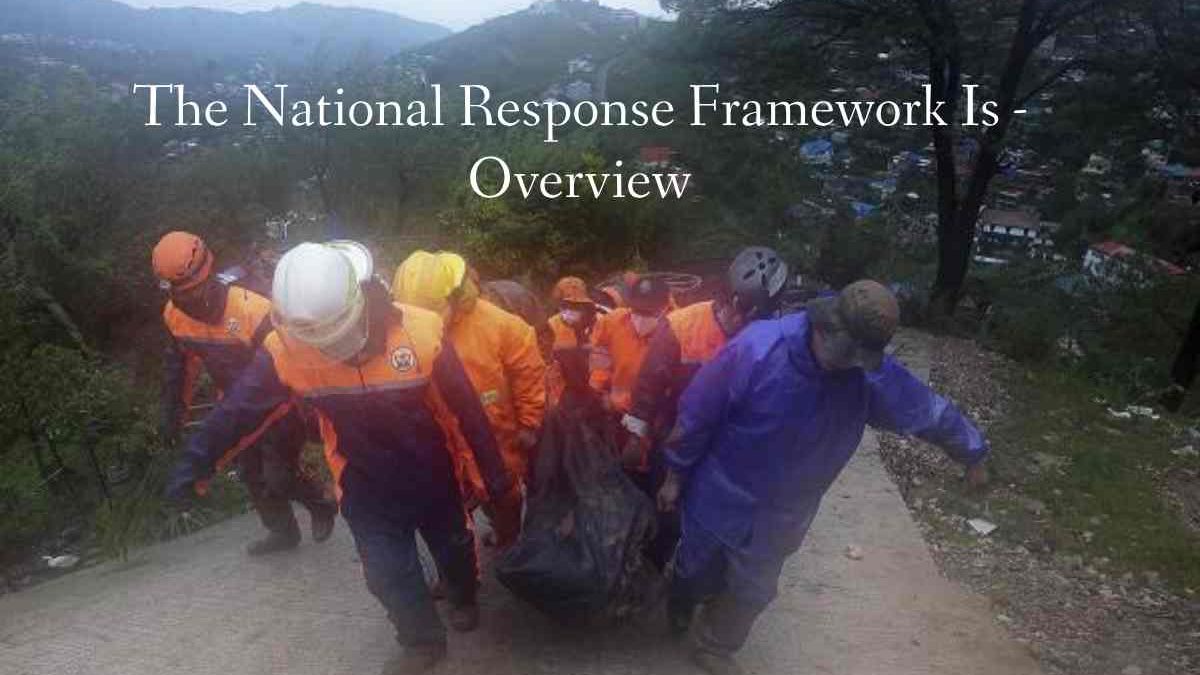The National Response Framework Is – The development of a National Response Framework was ratified by the Homeland Security Act of 2002 and Homeland Security Presidential Directive-5. The plan was completed in January 2005 and revised after Hurricane Katrina. The NRF integrates the National Contingency Plan (NCP) and other national-level contingency plans and supersedes the following plans:
Federal Response Plan (FRP);
Domestic Terrorism Concept of Ops Plan;
Federal Radiological Emergency Response Plan; and
Initial National Response Plan.
Table of Contents
National Disaster Response Force
National Disaster Response Force celebrated its 13th Raising Day on 19 January. The NDRF in India is constituted under the Disaster Management Act, 2005, as the National Disaster Response Force for particular response during natural and man-made disasters.
Currently, the NDRF has 12 battalions, including three from BSF and CRPF and two from CISF, SSB, and ITBP.
Role Of NDRF In Disaster Management
To provide expert response during human and natural disasters, thereby enabling effective execution of rescue and relief operations.
The National Disaster Response Force is essential in assisting the authorities in relief operations conducted during disasters.
National Disaster Response Force is also deployed during potential disasters.
During rescue or relief work in disasters, this force complements the rescue or relief work by coordinating with other attached agencies.
All battalions of NDRF are technically proficient and equipped with various specialist qualifications.
Along with natural disasters, this force can also deal with radiological, biological, nuclear, and chemical disasters through its four contingents.
The National Response Framework Is…
The National Response Framework (NRF) monitors how the nation reacts to disasters and crises. It is built on scalable, flexible, and adaptable concepts recognized in the National Incident Management System to align key roles and responsibilities.
The NRF is structured to help jurisdictions, citizens, nongovernmental organizations, and businesses:
Develop whole community plans
Integrate continuity plans
Build capabilities to respond to cascading failures among businesses, supply chains, and infrastructure sectors.
Collaborate to stabilize community lifelines and restore services.
The National Response Framework includes:
Emergency Support Functions describe federal coordinating structures that group resources and capabilities into functional areas most frequently needed in a national response.
Support Annexes that describe how support is organized among the private sector, non-government organizations, and federal partners.
Scope
The NRF is a framework for all threats and hazards, including accidents, technological risks, natural disasters, and human-caused incidents. This Framework is utilized to implement NIMS and describes whole community coordinating structures and response activities; in particular, the Framework outlines government, private sector, and non-governmental roles to reinforce National Response Framework collaborative incident response.
Beneficiaries
National Response Framework is intended to be used by communities; the private sector; NGOs; local, state, ethnic, regional, and insular area governments; and the Federal Government, and other entities involved in response. The private sector includes for-profit and nonprofit organizations, formal and informal structures, commerce, and industries that comprise the national economy and are not part of a government structure.
NGOs are a distinct category of organizations within the private sector that can include voluntary, ethnic, faith-based, veteran-based, disability, 9 relief agency, and animal welfare organizations, among others, and are referenced separately.
Results
A unique and harmonized framework for emergency response has been established.
Lessons Learned
This Framework is a living document, and it will be regularly reviewed to assess consistency with existing and new policies, evolving conditions, and the experience gained from its use. The first review will be completed no later than 18 months after the release of the Framework. Subsequent reviews will be conducted to evaluate the Framework’s effectiveness on a quadrennial basis.


